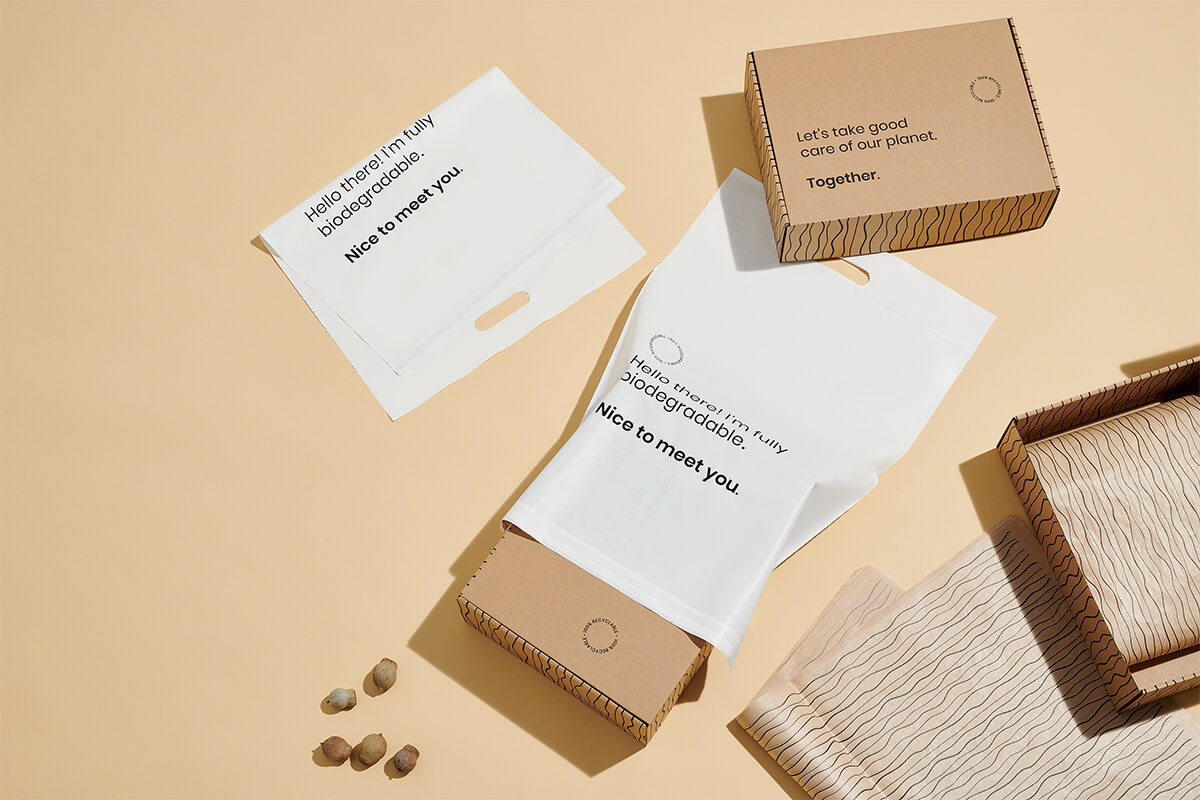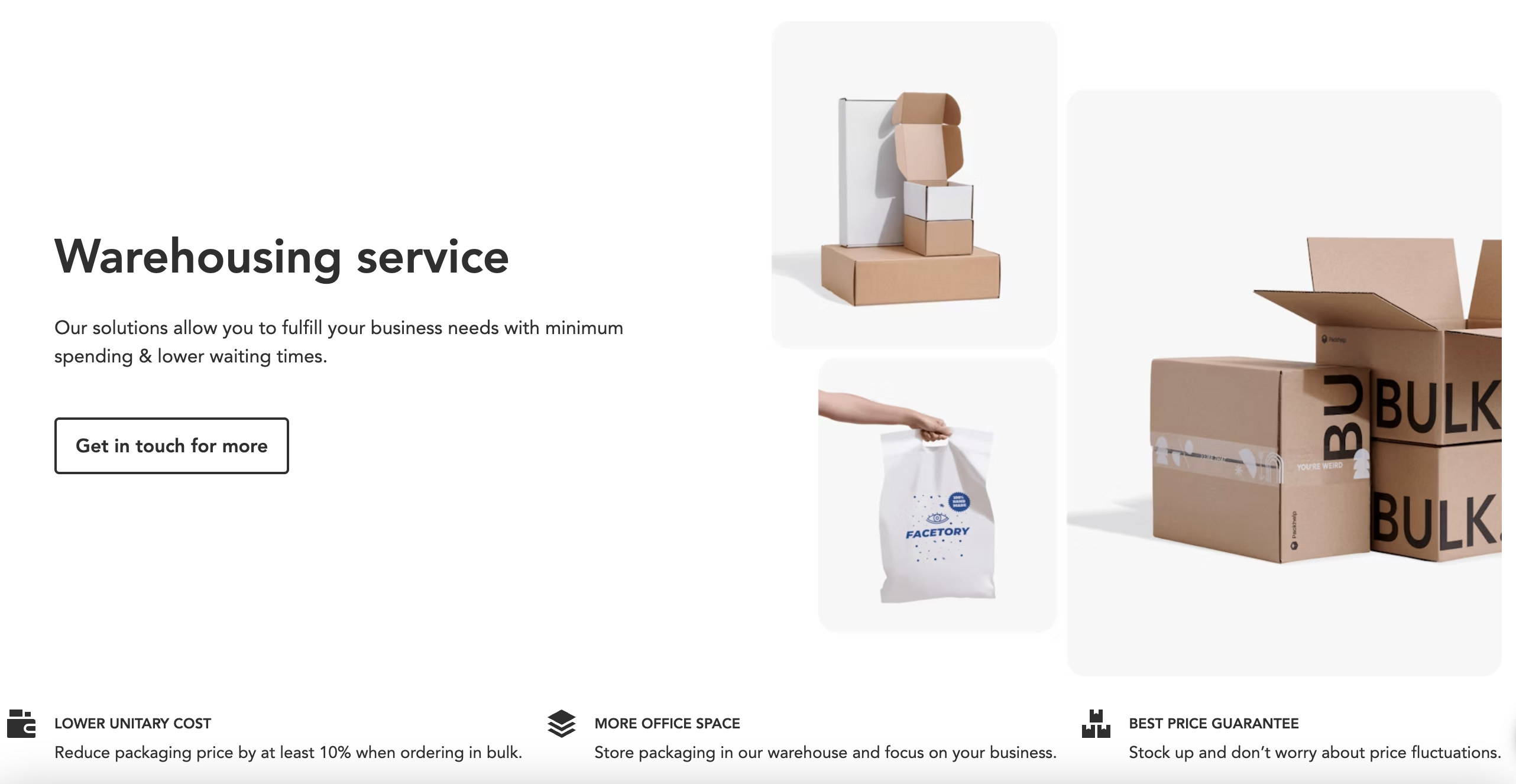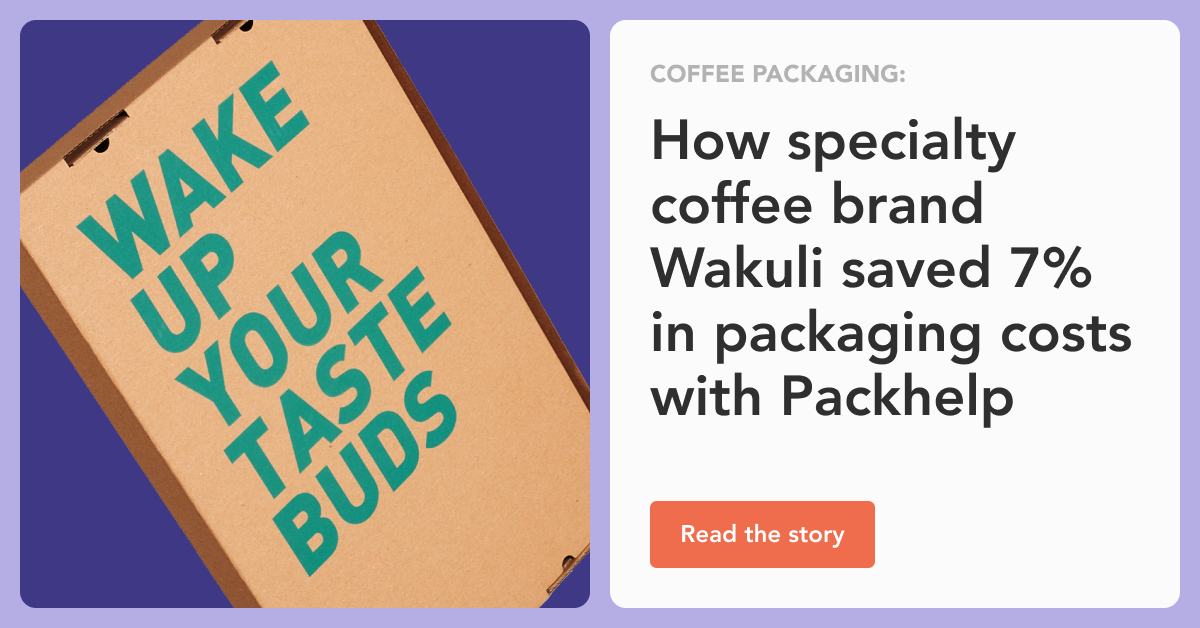The Economics of Packaging: Finding Cost-Effective Solutions


Subscribe now! Receive 15% discount.
Don’t miss out – get 15% off your first order when you join the newsletter. It’s fast, free, and kinda smart.
You're now subscribed!
In this article:
Beyond being a protective layer for your products, packaging gives you an opportunity to leave an outstanding impression on your customers.
In some cases, your product packaging may be all you need to turn one-time buyers into loyal customers. Studies have even shown that packaging can significantly contribute to the increased sales of a product.
But, here's the catch: packaging excellence often comes at a cost.
That’s not a cause for alarm though. There are several cost-effective packaging strategies you can adopt without compromising on quality. Let's dive into some of them while exploring key things you need to know about product packaging.

Some Packaging Statistics to Consider
Did you know that global plastics use has reached around 460 million metric tons in recent years? And, to make matters worse, something as indispensable as packaging accounts for 31% of this total.
The world needs conscious packaging policies, and it needs them now.
And it's a huge market. Global industrial packaging is valued at $62.32 billion and expected to reach $75.54 billion by 2025. The global food packaging market is projected to grow from $338.34 billion in 2021 to $478.18 billion in 2028.
But the landscape is changing to a more environmental approach. The biodegradable packaging materials market is about to surpass $169 billion by 2032.
We're seeing an unprecedented rise of the conscious consumer and packaging plays a critical role in any marketing strategy.
It's not just about the materials, though. You need to invest in a design that looks and feels high-quality through and through.
In fact, some designers have begun using generative AI to create packaging designs. Mornand, for instance, said the final packaging design of Alt-Planets, a ready-to-drink concept brand, was 80% the work of AI tools and 20% the work of humans.

AI is a fast way to help you create unique and functional designs. It's also a cheap solution, which is great if you're looking to save some money. After all, packaging can be an expensive part of your business.
In order to figure out a thorough cost-cutting strategy, though, you need to first consider the potential cost factors in packaging.
Cost Factors in Packaging
Once you can understand the factors that contribute to packaging costs, you’ll be better equipped to make informed decisions and pursue cost-effective solutions.
This is important, too, if you want to seek funding for your company, whether through small business grants or contributions from specific stakeholders. Packaging costs can make a tangible impact on your overall business expenses, and you’ll want to incorporate those into your proposals or applications for funding.
That said, here are two primary cost factors associated with e-commerce packaging.
1. Material costs
Some of the most popular packaging materials are cardboard, plastic and paper. But depending on your budget and needs, there are also others worth considering.
Your choice of material can and will contribute to the overall cost of your packaging.
A report by Packaging News reveals that high material costs can be due to the rise in raw material prices and overall production costs incurred by packaging companies. It’s safe to assume that these costs will find their way into what you pay for materials.
As an eCommerce business, the material choice for your product depends on important factors like:
- Product type, weight, shape and size
- Level of protection needed
- Industrial standards and packaging regulations
Since different materials come at different price points, you’d naturally want to strike a balance between cost, sustainability and functionality.
Read our simple guide to eco-friendly packaging materials
You can explore various options like looking out for suppliers with affordable prices. Or, consider bulk purchases so that you can buy more at lesser rates. Especially when you may incur additional costs on things like shipping and taxes with every purchase.
2. Size and weight considerations
Typically, larger and heavier packages will require more production materials, driving up the packaging cost. They're also less convenient if you’re buying from suppliers that charge weight-based shipping fees.
Additionally, when a box is too large for your product, you'll find yourself using more packaging fillers than you’d ordinarily need. These fillers may eventually add up to your packaging costs.
Learn more about creating the perfect packaging for your product's size and weight
In cases where you also pay for storage, large packages tend to require additional space and more careful handling, like manual sorting. This can also add to your inventory costs.

Ideally, you want to avoid costs that will creep into your profit margins. So, make sure to reduce the size of your packing materials as much as possible. Right-sizing will also make your packaging more eco-friendly (more on that later).
You’ll also have to think of material weight. While plastic is very light, cardboard is more sustainable.
Read on and learn how to save as much as possible with cost-effective packaging strategies.
Packaging Efficiency and Automation
Investing in packaging equipment and technologies can significantly improve productivity.
Automated sealing machines, for example, can seal packages quickly and efficiently, eliminating the need for manual taping or sealing. Semi-automated packing stations equipped with conveyors, label printers, and weighing scales can streamline the packaging process and reduce manual handling.
Maximising packaging efficiency through automation can help you save money and enhance customer satisfaction.
The two following aspects are worth giving a think:
1. Streamlining packaging processes
Optimising your packaging workflow can help eliminate bottlenecks, reduce unnecessary steps, and improve overall efficiency.
This will involve mapping out the entire packaging process, from receiving orders to final shipment and identifying areas where time or resources are being wasted.

Some components of this process include:
- Order processing
Inefficient order processing can lead to delays and errors in packaging. This could be caused by the lack of automation in order fulfilment or poor coordination between different departments involved in the actual packaging process.
Consider automating order processing with order management systems like Skuvault or Zoho inventory. They can handle order verification, real-time updates, and inventory management, leading to faster processing times.
- Packaging procedures
Having standardised packing procedures ensures consistency and eliminates the guesswork for employees.
Start by documenting packaging requirements, providing detailed packing instructions, and training packaging personnel to help reduce errors, minimise rework, and enhance overall efficiency.
Standardised procedures also facilitate cross-training and flexibility among team members, allowing for a more agile packaging operation in the long run.
2. Warehouse and inventory management
Poor handling and preparation of packaging materials can lead to unnecessary delays and waste. For example, if packaging materials are stored in a disorganised manner, employees may spend too much time searching for the required materials.
And it's a headache for everyone involved.
Optimise the storage and organisation of packaging materials by implementing proper labelling systems. This is how you get your time and money's worth of those spaces.
Additionally, implementing an advanced inventory tracking system, such as barcode scanning or radio frequency identification (RFID), can provide better visibility of inventory levels and locations. This enables efficient stock management if you sell a wide range of products. It also reduces the chances of stockouts which may delay the packaging process.
How do you handle a slow-moving inventory? Read our guide
Transition to Sustainable Packaging Solutions
Sustainable packaging is a type of packaging made from materials that have little or no negative impact on the environment throughout its lifecycle— from raw material extraction to the disposal of the package.
As environmental consciousness continues to grow, more brands are transitioning to the use of sustainable packaging solutions. Here's why this is happening:
1. Consumer demand for eco-friendly packaging
Consumers actually care about how much attention a company pays to the environment.
A study by The Economist found that customers believe companies to be responsible for creating a positive environment. In fact, 74% of consumers said they’re willing to spend more on sustainable packaging.
Seeing how eco-friendly packaging has become more appealing to consumers, it’s only smart that you consider these options for your business.
A sushi tray made from sugarcane is going to create a more positive experience for your customers than PET plastic. It's building your branding for free.
2. Innovations in sustainable packaging
Another reason brands are transitioning to the use of eco-friendly materials is due to the wide variety of options available. With sustainable packaging, the sky is the limit.
Some innovative sustainable packaging materials include:
- Mushroom packaging - made from the root of mushrooms called mycelium.
- Plant-based bioplastics - derived from plant sources, such as corn, sugarcane, or algae. These materials can be used to create packaging with similar properties to traditional plastics but with a significantly lower environmental impact.
Sugarcane is especially noteworthy for food delivery businesses. For example, a compostable pizza box is a big thumbs up for an eco-conscious pizzeria.
- Edible packaging - made from edible materials such as seaweed, starch, or edible films, these packages can be consumed along with the product, eliminating waste entirely.
For example, the 'Scoff-ee cup' is the UK's first ever edible coffee cup developed by KFC. The cups are made from biscuit, wrapped in edible sugar paper and lined with a layer of heat-resistant white chocolate, to keep the coffee hot and the cup crispy.

The list goes on. Show your commitment to the environment and in turn, you will encourage customer loyalty from those who want to patronise an eco-friendly brand.
Learn how to promote your eco-friendly packaging and reach more customers
Cost-Effective Packaging Strategies
Whether implementing a SaaS marketing strategy or ensuring good customer service, your business will have to incur costs.
This applies to packaging your products. That’s why you need to introduce some or all of the cost-effective strategies listed below in your company.
1. Use of efficient design (FEFCO styles)
The Fédération Européenne des Fabricants de Carton Ondulé – a nonprofit industry body representing corrugated fibreboard cardboard producers — has a catalogue of designs that don’t just ensure standardisation in packaging but also material efficiency, helping reduce material waste.
There are around 200 FEFCO codes packaging suppliers are familiar with, including your classic corrugated mailer box (FEFCO 0427) and your classic slotted-type shipping box (FEFCO 0201).
You can further customise these designs so they meet your product’s needs.

2. Leveraging plain packaging
Professional graphic design can be expensive. There are packaging concepts that can't or shouldn't be created without designers.
But, if your packaging idea is simple, cutting down on packaging costs doesn’t have to be that complicated.
One of your options is using intuitive and creative design tools such as Packhelp’s Online Editor to create custom designs yourself. Or, you can simply find ways to make do with plain or pre-printed packaging.
Instead of selling your candles in customised product boxes and jars, keep one of them plain. For example, you can use a simple, plain glass jar and only print the box. Or, get all of your packaging plain and brand them with custom labels or tape bearing your logo.
And you don't need fancy artwork to spruce up your packaging. Simple pre-printed stickers or thank you notes go a long way.
When it comes to packaging for your product, what customers keep in mind are your creative ideas, reliable materials and commitment to sustainability. Perfect the three (no need for huge expenditure!) and you're gold.
How to design packaging for a new product? Get professional tips here
3. Right-sizing packaging
What is right-sizing packaging?
Right-sizing packaging is selecting the most appropriate packaging size for each product, minimising excess void fill, and reducing wasted space.
By using packaging that closely matches the dimensions of the product being shipped, you can eliminate the need for excessive cushioning materials and reduce overall packaging material costs. This also helps reduce shipping costs by minimising dimensional weight charges.
Amazon, for example, is able to right-size packages by using machine learning to determine how best to package different products.

Implementing a dimensional weight calculator can also assist in determining the ideal packaging size for different products.
Additionally, prioritise regular audits and evaluations of packaging sizes. As long as you continuously adjust the size as needed, your costs will always be optimised.
4. Collaborative partnerships and supply chain optimisation
Supply chain collaboration involves working with your internal teams and external partners to manage the flow of supply so you can efficiently handle your packaging needs.
Collaborating with different partners in your supply chain can help you manage your costs in the long run.
When you collaborate with packaging companies, as well as other businesses that need packaging services, you can pool your resources for more optimised packaging. Here are 3 ways in which such collaborations can help:
1. Bulk purchasing - you can buy your packaging materials in bulk. By consolidating orders and buying in larger quantities, you can negotiate better prices, obtain volume discounts, and reduce the overall cost of packaging materials.
2. Shared warehousing - sharing warehouse space with other supply chain partners can lead to cost savings. By combining storage needs, you can reduce individual warehouse expenses, such as rent, utilities, and labour.

3. Collaborative demand planning - sharing information about product forecasts, promotional activities, and market trends allows you to synchronise your packaging operations with your supply chain partners. It means the suppliers can determine when your next batch of packaging will be needed and prepare for them. This can also help to optimise inventory levels and reduce packaging waste.
Supply chain optimisation, like using efficient transportation routes, can further contribute to cost-effective packaging. By lowering transportation costs you indirectly affect your packaging expenses.
5. Consultation with a packaging expert
Consulting with someone who knows the ins and outs of packaging design–including the strategies we discussed above—can help you save on packaging costs.
An experienced package designer can analyse what you use and combine as many packaging materials as possible to ensure a streamlined packaging inventory.
In other words, they ensure economies of scale. And you spend less on machine setup, tools, and purchases of packaging materials.
Consult a packaging expert and find your tailor-made, cost-effective solution
Case Studies
This conversation wouldn’t be complete without seeing some examples of brands that have won with cost-effective ecommerce packaging.
Natural Treats, a company selling natural dog food online, use a minimalistic approach to packaging design. Rightly sized to fit their products, the plastic-free packaging made from recycled cardboard corresponds with their organic-centred branding.
The beautiful packaging design was made using Packhelp’s Online Editor at no cost.

We Are Knitters, a Madrid-based brand, uses Packhelp’s Eco Mailer Box to deliver a delightful knitting experience to their clients around the world. In 2019, the company released its WAK BOX, which fits two knitting projects for maximum space efficiency.
The cardboard mailing box comes printed in simple black which completes the eco-friendly look.

The German brand Sober, making cosmetic products for men, adheres to minimalism even when it comes to its packaging design. But the compact Eco Mailer Boxes are just as functional, with their all-natural look that reflects the brand’s commitment to clean care.

These brands have not only adopted cost-effective packaging strategies but have also managed to maintain sustainable packaging practices over time.
So, feel free to take a cue from them as you seek to cut down on your packaging costs.
Conclusion
Packaging is an essential consideration for eCommerce brands and any businesses selling physical products. Without careful attention to cost factors like materials, size or weight, you will end up paying more than you need.
You've now explored key areas of product packaging like the need for optimisation, automation, and sustainability. You also saw how leveraging an efficient package design, right-sizing for the best fit, collaborating with supply chain partners, consulting with a packaging expert, and using plain packaging can help you optimise your costs in the long run.
Now it’s time to put these things to work and get your business results ASAP. Good luck!











